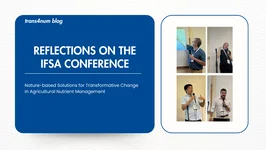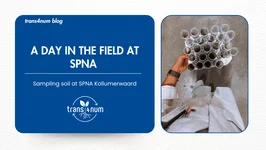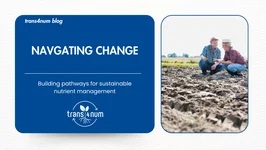| Communication team
Green refining offers a groundbreaking way to produce high-protein feed from perennial crops, delivering both environmental benefits and new opportunities for sustainable agriculture.
by Pia Strunge Folkman
The Climate Foundation Skive is a non-profit foundation which works for creating an environmentally sustainable agricultural and energy sector building on profitable and effective production. The basic concept is: If people and companies cannot make a business they do nothing and change nothing. Therefore, a sustainable environment will only be (re)created if people can do profitable business while doing it in an environmentally sound and sustainable way.
In concrete terms, the agricultural sector in Denmark (as well as in much of Europe and beyond) is currently operating in an unsustainable manner. Agriculture leaves a substantial climate and environmental footprint, with significant nutrient losses polluting aquatic ecosystems, and pesticide residues leaching into groundwater with potential toxic effects on human health. Along many Danish coastlines, nutrient pollution has reached such levels that marine life can barely survive, an impact for which agriculture bears a considerable share of the responsibility.
At the same time, a global crisis is looming on the horizon - a growing lack of nutritious food. Across many parts of the world, agricultural yields are declining due to factors such as soil compaction, droughts, flooding, and salinization. As food demand continues to rise and supply diminishes, there is increasing pressure to convert natural ecosystems into farmland.
To solve the problem, new, profitable agricultural practices must be found. Practices, which can give high yields of nutritious food while avoiding pollution and helping regenerate soils to become more productive.
Grass and other perennial crops come into play here. Perennials are characterized by an ability to regrow after cutting and harvest and they live for several years – not just one season as most crops do. Furthermore, they have a long growth season. Basically, they grow whenever light and water is present in sufficient amounts and temperatures are above 0 °C. In Denmark that normally means from mid-April to the end of October.
Perennial crops experience their most vigorous growth around midsummer, when daylight hours are at their peak. Their yields are impressive, not just in terms of dry matter, but even more so in protein content. For comparison, a typical wheat crop produces about 6.5 tons of dry matter per hectare with a protein content of roughly 14%. In contrast, a clover-grass mixture (composed of perennials) yields between 11 and 13 tons per hectare with a protein content around 20%. This means more than double the protein yield. The challenge, however, is that clover-grass is primarily suitable for ruminants and cannot be efficiently consumed by monogastric animals such as pigs and poultry.
Green Refining
Fortunately, a solution exists. Protein can be extracted in concentrated form from grasses and other perennial crops. The process involves pressing juice from the plant material and then filtering it to separate a highly concentrated protein fraction, while discarding most of the water and sugars. A basic version of this process yields a protein concentrate suitable for monogastric animals such as poultry and pigs. A more advanced version allows for the separation of two distinct protein fractions: one of food-grade quality for human consumption, and another for animal feed.
The process also generates two main side streams: a watery byproduct known as “brown juice” and a fibrous residue called “press cake” or “pulp.” Currently, around one-third of the total protein content in the plants is recovered in the two concentrated fractions, with most of the remaining protein still present in the pulp. This pulp is a valuable feed for ruminants but must be conserved immediately, by drying or ensiling, as it decomposes quickly. It also holds potential for use as insect feed or as a raw material for various biobased products. At present, both the pulp and the brown juice are utilized for biogas production at Denmark’s only operational green refining facility.
Improving profitability
Like many emerging industries, green refining currently faces challenges with process efficiency. At present, it cannot yet compete economically with established protein sources such as soybeans. However, with targeted optimization across several key areas, the technology has strong potential to become competitive within a few years. These areas include:
- Improved logistics and raw material handling
- Enhanced process efficiency
- Greater automation and the shift to continuous production
- Reduction in energy and process water consumption
- Development of better perennial crop varieties, with a focus on protein content and extractability
- Repurposing of equipment for off-season production uses
- Higher-value applications for side-streams, such as pulp and brown juice
- Economies of scale throughout the entire value chain
- Agricultural policy adaptations, to ensure fair financial support across production systems
- Regulatory adjustments, such as environmental tariffs on existing cropping systems to reflect their external costs
If these factors are addressed, ideally through coordinated public and private investment, green refining can evolve from an innovative concept to a commercially viable and environmentally transformative industry.
Behind these technological improvements lies a critical need for financing. As with many new innovations, securing funding for the essential steps required to scale the technology is often difficult. Yet without scaling, bringing products to market remains nearly impossible. To break this cycle, mechanisms that reduce risk from the investor’s perspective are essential. Without such measures, progress will be slow at best - and at worst, the development may stall entirely.



